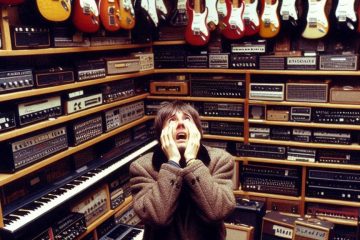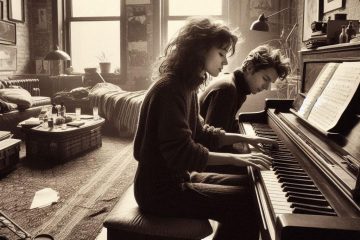I’m currently working on songs for a debut synthwave/chillwave album for Doxkyn. A lot of the album started as “loop sketches” using the 8-track loop player that comes with the LoopCloud subscription.
This player is pretty genius. It allows you to audition loops in your project before you purchase them which is incredibly helpful. I’ve also found it really helpful for compiling samples when creating transition effects for songs (more on that another time). Ultimately it has been really useful for curating loops to sketch out song ideas.
Limitations + Speed = Creativity
The beauty is in the limitations. You have 8 tracks to pull together sounds which create an interesting song idea when played back in a 8 – 16 bar loop.
For synthwave, I generally find a bass line and then a foundation drum groove. Next comes a top loop or percussion loop to spice up the foundation groove. Then an arpeggio and/or rhythmic guitar part. Add a pad and by this stage you’ve got a nice foundation. Next I try to find a lead line or two. Then if I have any tracks left I’ll try to find something weird to throw in that enhances the atmosphere of the track.
Turning Your Sketch Into A Painting
Once I’ve got this selection of curated loops I put them away for a few weeks. When I’m ready they all get brought into Logic Pro X and then I’ll start to build an arrangement.
It’s a fun process of discovery. You never quite know where to start and what to bring in next. Sometimes these loop ideas will start “speaking to you” and they just start falling into place. Other times you have to get creative. Starting loops off the beat; cutting them up to create a different melody; chord progression; beat etc. Sometimes, if the sample allows, I can re-sample a note in Logic’s quick sampler and create an instrument to play in a new part.
Juice Your Songwriting Process
There is so much value in this method:
- curating sounds, frequencies, rhythms, melodies etc that compliment
- learning to work quickly and decisively (I’ll sometimes give myself a time limit to sketch for added fun)
- learning musical structure and energy management in a piece
- compositional methods of repetition and variation etc.
But more on that another time.
The Takeaway: The speed at which you can create using this method is incredibly compelling and is far from being uncreative. If I listen to the finished songs against the loop sketch that started the song, they bear a vague resemblance. If you haven’t tried adding limitations to your compositional method as well as trying to work at speed, give it a try. Would love to hear what you come up with.



0 Comments